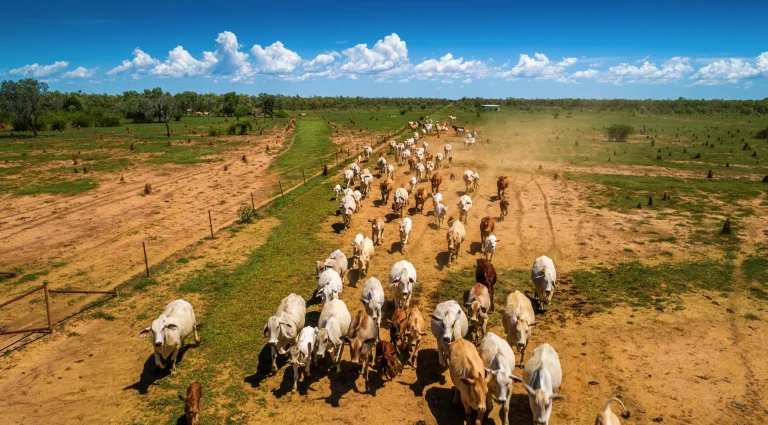Insights Into the Livestock Property Market Dynamics
The Australian livestock property market represents one of the most complex and dynamic sectors within agricultural real estate, where understanding market forces can mean the difference between a profitable investment and a costly mistake. For investors, operators, and landowners seeking insights into the livestock property market dynamics, the interplay between commodity prices, rainfall patterns, land values, and operational efficiency creates a constantly shifting landscape that demands expert navigation.
At Agribusiness Horizons, we recognize that successful livestock property transactions require deep understanding of these market dynamics. Our specialized team provides comprehensive analysis and strategic guidance to help clients make informed decisions in this challenging yet rewarding sector. Whether you’re considering acquiring a cattle station, selling a sheep property, or optimizing your existing livestock operation, we encourage you to contact us for expert assistance tailored to your specific needs.
This comprehensive analysis will examine the key factors driving livestock property values, regional variations in market performance, and strategic considerations for both buyers and sellers in today’s evolving agricultural landscape.
Understanding the Foundation of Livestock Property Markets
The livestock property market operates on fundamentally different principles compared to other agricultural sectors, with unique characteristics that influence both short-term transactions and long-term investment strategies. Unlike cropping properties where annual yields provide relatively predictable income streams, livestock operations depend on complex interactions between animal performance, pasture quality, seasonal conditions, and market timing.
Insights into the livestock property market dynamics reveal that property values are influenced by carrying capacity, infrastructure quality, water security, and proximity to processing facilities. These factors create significant variations in property performance even within the same geographical region. Properties with superior genetics programs, established feed systems, and modern handling facilities command premium prices due to their operational advantages and reduced risk profiles.
The market also demonstrates strong cyclical patterns driven by commodity price fluctuations, drought cycles, and international trade relationships. Understanding these cycles enables informed decision-making about optimal timing for property acquisitions or disposals, making market intelligence a crucial component of successful livestock property investment strategies.
Regional Market Variations and Performance Drivers
Australia’s diverse climate zones and geographical regions create distinct livestock property markets, each with unique characteristics and performance drivers. Northern Australia’s extensive cattle country operates under different market dynamics compared to southern sheep and cattle regions, with factors such as seasonal rainfall patterns, breed suitability, and market access creating significant variations in property values and investment potential.
The northern cattle regions, encompassing parts of Queensland, Northern Territory, and Western Australia, typically feature large-scale operations with extensive grazing systems. These properties often demonstrate strong correlation between rainfall patterns and market performance, with wet seasons driving improved carrying capacity and animal performance. Infrastructure development, including road access and processing facility proximity, significantly influences property values in these remote areas.
Southern livestock regions, including premium cattle and sheep country in New South Wales, Victoria, and South Australia, generally feature higher-intensity operations with improved pastures and sophisticated management systems. These markets often demonstrate greater price stability due to diversified income sources, including wool production, prime lamb markets, and breeding stock sales. The proximity to major population centers and export facilities provides additional market advantages.
Technology Integration and Modern Livestock Operations
Contemporary livestock property markets increasingly reflect the value of technological integration and modern management systems. Properties equipped with advanced monitoring systems, automated feeding infrastructure, and precision agriculture technologies command premium prices due to their operational efficiency and reduced labor requirements.
Insights into the livestock property market dynamics demonstrate that buyers increasingly prioritize properties with established technology platforms, including livestock monitoring systems, pasture management software, and automated handling facilities. These technologies not only improve operational efficiency but also provide detailed performance data that supports informed management decisions and demonstrates property value to potential purchasers.
The integration of renewable energy systems, particularly solar installations and battery storage, has become increasingly important in livestock property valuations. Properties with established renewable energy infrastructure reduce operational costs and demonstrate environmental stewardship, appealing to both traditional operators and ESG-focused investors seeking sustainable agricultural investments.
Water management technology, including advanced irrigation systems, stock water monitoring, and drought-resilient infrastructure, significantly influences property values across all livestock regions. Properties with sophisticated water management systems demonstrate reduced climate risk and improved operational reliability, making them attractive to buyers seeking long-term investment security.
Market Timing and Investment Strategies
| Factor | Optimal Buying Conditions | Optimal Selling Conditions | Market Impact |
|---|---|---|---|
| Commodity Prices | Declining or stable prices | Peak price periods | High correlation with property values |
| Seasonal Conditions | Following drought periods | During favorable seasons | Affects carrying capacity assessments |
| Interest Rates | Higher rate environments | Lower rate periods | Influences buyer financing capacity |
| Currency Fluctuations | Strong Australian dollar | Weaker dollar periods | Impacts export market demand |
Understanding optimal market timing requires comprehensive analysis of multiple factors that influence livestock property values and transaction activity. Commodity price cycles create significant opportunities for strategic buyers and sellers, with property values often lagging behind commodity price movements by several months.
Seasonal conditions play a crucial role in market timing, with drought periods often creating acquisition opportunities as operators seek to reduce stock numbers or dispose of properties. Conversely, favorable seasonal conditions typically drive increased buyer interest and higher property values as improved pasture conditions demonstrate property potential.
Interest rate environments significantly influence buyer behavior and financing capacity, with lower rates generally supporting higher property values through improved affordability. However, experienced investors often identify opportunities during higher rate periods when competition may be reduced and motivated sellers create favorable negotiating conditions.
Agribusiness Horizons’ Livestock Property Expertise
Our specialized approach to livestock property transactions combines deep agricultural knowledge with sophisticated market analysis to deliver superior outcomes for our clients. We understand that insights into the livestock property market dynamics require more than surface-level market data – they demand comprehensive understanding of operational factors, regional variations, and strategic timing considerations.
Our team’s expertise encompasses all aspects of livestock property evaluation, from carrying capacity assessments and infrastructure analysis to water rights evaluation and genetic program valuations. We work closely with agronomic specialists, veterinary professionals, and livestock industry experts to provide comprehensive property assessments that inform strategic decision-making.
We recognize that successful livestock property transactions require understanding of both current market conditions and long-term industry trends. Our market intelligence capabilities enable us to identify emerging opportunities, assess risk factors, and develop strategies that align with our clients’ investment objectives and operational requirements.
Our comprehensive approach includes detailed financial modeling that incorporates commodity price sensitivity, seasonal variation impacts, and operational efficiency improvements. This analysis helps clients understand potential returns under various scenarios and make informed decisions about property acquisitions, improvements, or disposals.
Future Trends and Market Evolution
The livestock property market continues to evolve in response to changing consumer preferences, environmental considerations, and technological advancement. Increasing focus on sustainable production methods, carbon sequestration potential, and biodiversity conservation creates new value drivers that influence property assessments and investment decisions.
Consumer demand for premium, sustainably-produced livestock products supports higher commodity prices for operators who can demonstrate environmental stewardship and animal welfare standards. Properties with established sustainability credentials and certification programs increasingly command premium values due to their market positioning and reduced regulatory risk.
Climate resilience has become a critical factor in livestock property valuations, with buyers prioritizing properties that demonstrate adaptability to changing weather patterns and extreme events. Properties with diversified pasture systems, drought-resistant infrastructure, and flexible management capabilities attract premium prices due to their reduced climate risk exposure.
The integration of carbon farming and biodiversity conservation programs provides additional revenue streams that enhance property values and investment returns. Properties with established carbon credit programs or biodiversity stewardship arrangements demonstrate diversified income potential that appeals to both traditional operators and institutional investors.
Conclusion
Understanding the complexities of livestock property market dynamics requires comprehensive analysis of multiple interconnected factors that influence both short-term transaction activity and long-term investment performance. From commodity price cycles and seasonal variations to technological integration and sustainability considerations, successful navigation of this market demands expert guidance and strategic planning.
The livestock property market will continue to evolve as new technologies, changing consumer preferences, and environmental considerations reshape industry dynamics. Properties that demonstrate operational efficiency, environmental stewardship, and climate resilience will likely command premium values as the market increasingly recognizes the importance of sustainable, technology-enabled operations.
As you consider your livestock property investment strategy, several thought-provoking questions emerge: How will changing consumer preferences for sustainably-produced livestock products affect property values in your target region? What role will carbon farming and biodiversity conservation play in enhancing your property’s long-term value proposition? How can you position your livestock operation to capitalize on emerging market opportunities while managing traditional risk factors?
For expert guidance on navigating the complex insights into the livestock property market dynamics and developing strategies tailored to your specific objectives, contact Agribusiness Horizons today. Our specialized team stands ready to provide the comprehensive analysis and strategic support you need to make informed decisions in this dynamic and rewarding market sector.



